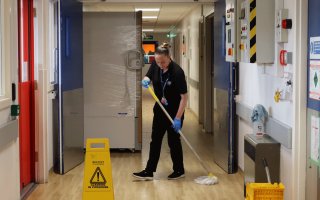Stress at work: what is it, and where does it come from?
Most of us have suffered from stress at some time in our working lives. Employers are responsible for the safety of their employees while they are
at work, and this includes stress. Indeed, the Health & Safety Executive (HSE) is a government body that safeguards health, safety, and welfare in the UK workplace. It is good news that the problem of stress is recognised and addressed in the nation’s political and legal frameworks.
HSE defines stress as;
The adverse reaction people have to excessive pressures or other types of demand placed on them.
HSE also identifies six aspects of working life which, if not adequately managed, can lead to stress:
- Demands – when you cannot cope with the demands of your role and its workload
- Control – when you cannot control the way in which you perform your work
- Support – when you do not receive the information and support you need for your job role
- Relationships – when you are struggling in work relationships, or being bullied
- Role – when you do not fully understand your role
- Change – when you are not engaged with changes happening in your organisation
Whatever the source of workplace stress, your employer is legally obliged to manage it. First, they should make a risk assessment of the health risks, along HSE guidelines, and act on it.
Spotting the outward signs of stress in your workplace
Inevitable work pressures can affect us in different ways, according to temperament, personal history or circumstances. But all of us, especially those in management roles, can recognise the classic indicators that stress is becoming a problem.
Look out for these signs in teams, individuals, and yourself:
- Increase in adverse emotional reactions and mood swings: individuals becoming agitated, on edge, aggressive or tearful; or distant and withdrawn
- Physical symptoms such as headaches, nausea, fatigue, sleeplessness, muscle tension
- Arguments between colleagues
- More sickness absence
- Late arrivals at work
- Higher staff turnover
- Increased reports of stress
- Lower performance; loss of motivation, commitment and confidence
- A rise in complaints and grievances
- Internal indicators of stress
As well as the more obvious stress indicators, consider also the role that emotions have to play. You may notice an uptick in negative feelings within yourself or pick them up in a colleague (which becomes easier to do with the more time spent with them).
Stress can make workers feel unusually negative, cynical, downbeat, anxious, or irritable. They might struggle to concentrate, or make decisions. There may be a sense of being overwhelmed or isolating from the team.
You may also notice the use of ‘coping mechanisms’ in ourselves or our colleagues. Stressed workers might be smoking or drinking more than usual, or even substance abusing.

Strategies to counteract workplace stress
Harvard Medical School has some effective first-response tactics to beat stress.
- Problem-solving – with help from your colleagues. To prevent negative emotions from distorting your response to a work issue, rationally analyse the problem and your options .It would be especially helpful to collaborate with colleagues, including your line manager – other perspectives can make all the difference. Brainstorm potential solutions, then you could rank them or test them as required. This breaks the problem down into realistic steps. For a more strategic plan to address workplace stress, try the range of Wellness Action Plans available from mental health charity Mind.
- Relax your muscles. Stressful experiences can bring on a fight-or-flight reaction, when muscles tense up. Muscle relaxation techniques help to counteract this. Close your eyes, and tense each of your major muscle groups, from your legs upwards, for 10 seconds, and release for 20 seconds. As you release, think of the word “relax.”
- Re-appraise negative thoughts. Emotional knee-jerk responses to stress can lead us to jump to conclusions that have little or no bearing on reality. For example, “This project is a complete failure,” or “my team will hate me for this.” Instead, develop a habit of treating these negative thoughts as hypotheses rather than facts, and calmly assess each one, considering other options.
- Centre your mind. Break the cycle of anxiety about the past or the future with a centring technique that suits you. For example, mindfulness, meditation or spiritual centring practices such as prayer. These techniques can aid acceptance of the present moment, and openness to its possibilities. You can search online for apps or guided programs that could help you get started. Also, try more informal mindfulness when you’re engaged in activities you enjoy. Exercise, cooking, arts, crafts: find a hobby you can get absorbed in, and let it neutralise the negative emotions that work stress can induce.
- Respect your body. Attending to your physical needs can help offset the negative effects of stress on both the body and the mind. Try to make sure you get regular exercise, a balanced diet, adequate sleep, and a healthy work-life balance overall.

Collaborative action against workplace stress
Admitting that stress is becoming a problem can be difficult. But talking about the issue is the best route.
Your line manager is your first point of reference. Arrange an informal meeting or an appraisal to discuss the problem and agree on a helpful strategy. Alternatively, contact your HR department, trade union representative, work counselling service if there is one, or your GP.
At Samsic UK, we have found our Mental Health First Aider program to be a highly effective way to address our people’s mental health and wellbeing. Our Mental Health Champion coordinates the program, and volunteers from across the company have doubled in number during the first year.
The First Aiders are trained to assess an individual’s needs, and signpost them towards resources or organisations that can offer the appropriate level of support and guidance.
To learn more about how a similar program could benefit your workplace, you can read the full story in our blog.
Further resources on managing workplace stress:
Mental health charity Mind: https://www.mind.org.uk/workplace/
Stress Management Society: https://www.stress.org.uk/









